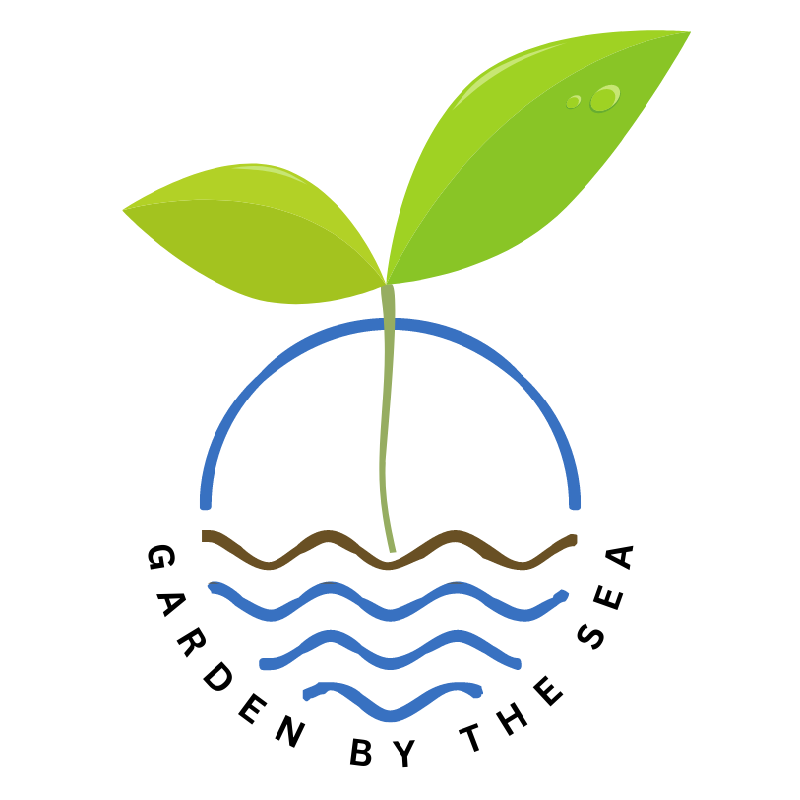Ocean Shores Flower Experiments:
Ocean Shores is so GRAY. My sister keeps reminding me: We live in GRAYS Harbor after all. What did you expect? But Central Park isn’t as gray, at least not in May. Remember all those rhodys that line US12 on the way into Aberdeen. We can grow rhodys here too. And what about daffodils, lithodora, poppies, and shasta daisies? They do pretty well at surviving the deer.
I was thinking the same thing last spring. I was planting the Pollinator beds in the WSU Master Gardener plots at Garden by The Sea (GBTS) and watching plants in yards and gardens and talking with local gardeners about what will grow here. So here are a few results of my experiments, observations and conversations.
Most of the annuals I’ve tried from seed didn’t fare too well. The bellflowers, impatiens, and coastal verbena just barely came up and never got strong enough to bloom. The marigold varieties (calendula and tagetes) were late and slow at getting started, but eventually did bloom and are ready to be pulled.
I often treat rhudbeckia (black eyed susans) and echinaceae similarly, even though rhudbeckia are biennials and echinaceae are perennials. I had planted both from seed last year in the pollinator bed at GBTS, but only one or two came up, so early spring this year I planted several varieties from starts. Surprisingly, they didn’t come up as I thought they would. Some look like a cross between rhudbeckia and echinaceae. I can’t tell what they really are, except that they are lovely!
By early July we had butterflies resting on the floral landing pads. That includes the Shasta daisies I had brought over from my Renton garden. They grew and bloomed well and even reproduced spectacularly, as they seem to all over Ocean Shores.
All three of these are supposed to be relatively deer resistant. I can attest to the Shasta daisies. I wish more people here would try them. They are as consistently successful as lavender and daffodils. The rhudbeckia and echinaceae were grown behind the deer fence at GBTS, and I have not seen them elsewhere here. I don’t know about their actual deer resistance. I still think they’re good bets so I planning on trying them in my own unfenced Ocean garden.
Poppies are a mystery to me. I am careful to select only perennial varieties. For the last two years, I planted seeds from thriving plants of previous years and from purchased “guaranteed” seeds. I planted them in the fall and again multiple times each spring, in both the GBTS pollinator bed and in my Ocean home gardens. I even started some inside in my greenhouse window on heated seedling pads. I nursed them carefully. Nothing beyond the two germinator-leaves grew anywhere. I love them and they are truly deer resistant. So I get starter plants now and they do beautifully. In fact my experience is leading me to forget seeds and start with good strong plants. (At least until I find a local gardener who can get me up to speed in starting plants from seeds here.)
All of the other plants I tried last year grew well, flowered, survived the winter and returned even stronger this spring: sea thrift, rosemary, thyme, columbine, lupine, lavender and heather. All are supposed to be deer resistant. From my own experience and conversations with local gardeners deer don’t seem interested in the woodier herbs (rosemary, thyme, lavender and heather.) My sister though had deer “prune” one of her favorite new heather plants. She was not only mad at the deer but was also miffed at me since I had suggested it would be OK. Later she relented when that heather seemed to have benefited from the “pruning.”
Columbine and lupine are both sometimes munched on outside of fences. All of the ones I was tracking returned even if chewed down to a few inches. There is still hope for the next year.
It is possible to grow flowers and add color to our gray city. It does take a little more thought and care, especially to get around the deer problem. Even though it’s harvest time, do come by and take a look at the Garden By The Sea. There’s still a lot to see.
This article was originally printed in The Ocean Observer, June 2019.



